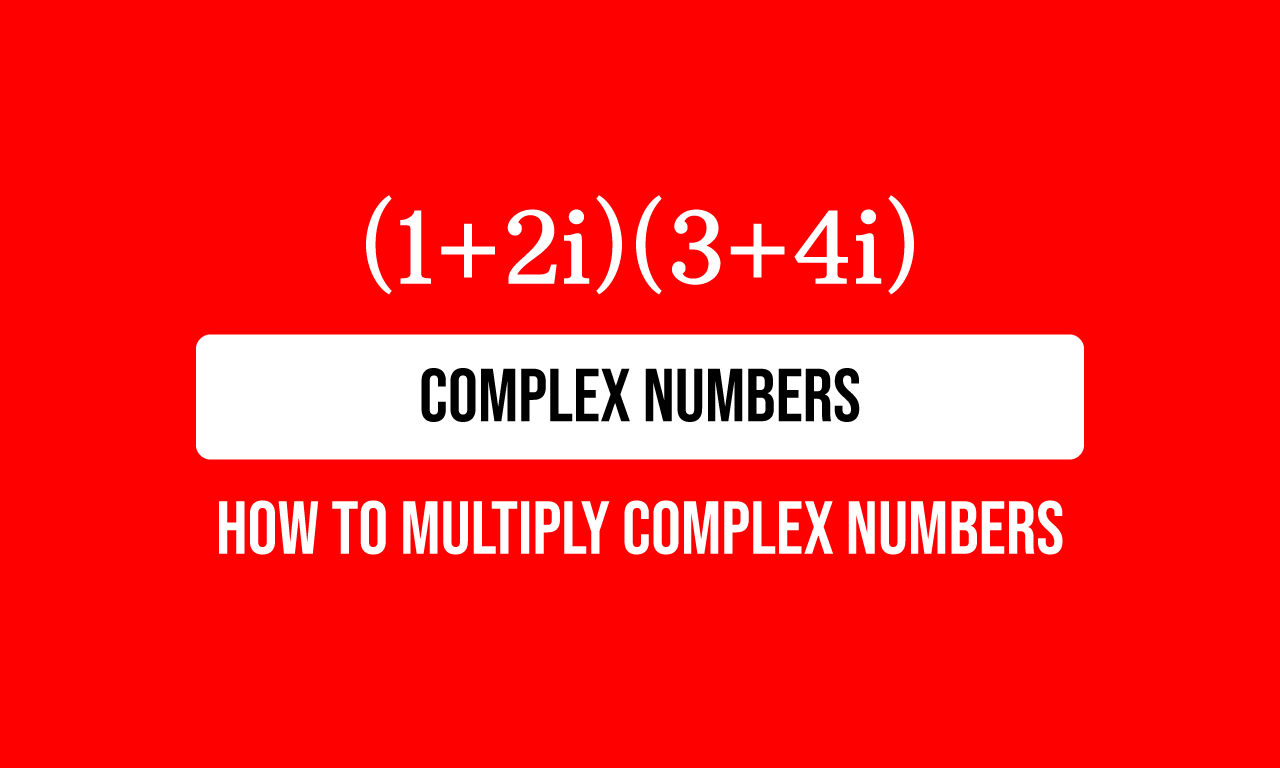The product of one plus two times imaginary unit and three plus four times imaginary unit is the given mathematical expression in this math problem.

$(1+2i)(3+4i)$
The product of $1$ plus $2i$ and $3$ plus $4i$ is a mathematical representation for the multiplication of them. Therefore, the above mathematical expression can be written as follows.
$=\,\,\,$ $(1+2i) \times (3+4i)$
Multiplying the terms in the complex number $3$ plus $4i$ by another complex number $1$ plus $2i$ confuses some learners. So, let’s denote the complex number $1$ plus $2i$ by a variable. In this problem, the complex number $1+2i$ is denoted by a variable $z$.
$=\,\,\,$ $z \times (3+4i)$
The complex $3+4i$ is a binomial and its terms are multiplied by a variable $z$. So, the terms $3$ and $4i$ can be multiplied by the variable $z$ as per the distributive property of multiplication over the addition.
$=\,\,\,$ $z \times 3$ $+$ $z \times 4i$
The use of variable $z$ is over. So, replace the variable $z$ by its actual value in the above mathematical expression.
$=\,\,\,$ $(1+2i) \times 3$ $+$ $(1+2i) \times 4i$
According to the commutative property of multiplication, the positions of the factors can be changed in each term.
$=\,\,\,$ $3 \times (1+2i)$ $+$ $4i \times (1+2i)$
Now, use the distributive property one more time in each term to distribute the coefficient over the addition of the terms.
$=\,\,\,$ $3 \times 1$ $+$ $3 \times 2i$ $+$ $4i \times 1$ $+$ $4i \times 2i$
The complex number $1$ plus $2i$ is multiplied by another complex number $3$ plus $4i$. The multiplication of them formed a mathematical expression. Now, it is time to simplify the mathematical expression to find the product of the given complex numbers $1$ plus $2i$ and $3$ plus $4i$.
$=\,\,\,$ $3$ $+$ $6i$ $+$ $4i$ $+$ $8i^2$
Second and third terms are like terms in the above mathematical expression. Therefore, add the like terms $6i$ and $4i$ to find the sum of them.
$=\,\,\,$ $3$ $+$ $10i$ $+$ $8i^2$
$=\,\,\,$ $3$ $+$ $10i$ $+$ $8 \times i^2$
According to the complex numbers, the square of imaginary unit is negative one.
$=\,\,\,$ $3$ $+$ $10i$ $+$ $8 \times (-1)$
$=\,\,\,$ $3$ $+$ $10i$ $-$ $8$
Now, use the commutative property to write the terms in an order for our convenience.
$=\,\,\,$ $3$ $-$ $8$ $+$ $10i$
Look at the first and second terms. They are numbers. So, subtract the number $8$ from number $3$ to find difference of them.
$=\,\,\,$ $-5+10i$
A free math education service for students to learn every math concept easily, for teachers to teach mathematics understandably and for mathematicians to share their maths researching projects.
Copyright © 2012 - 2023 Math Doubts, All Rights Reserved